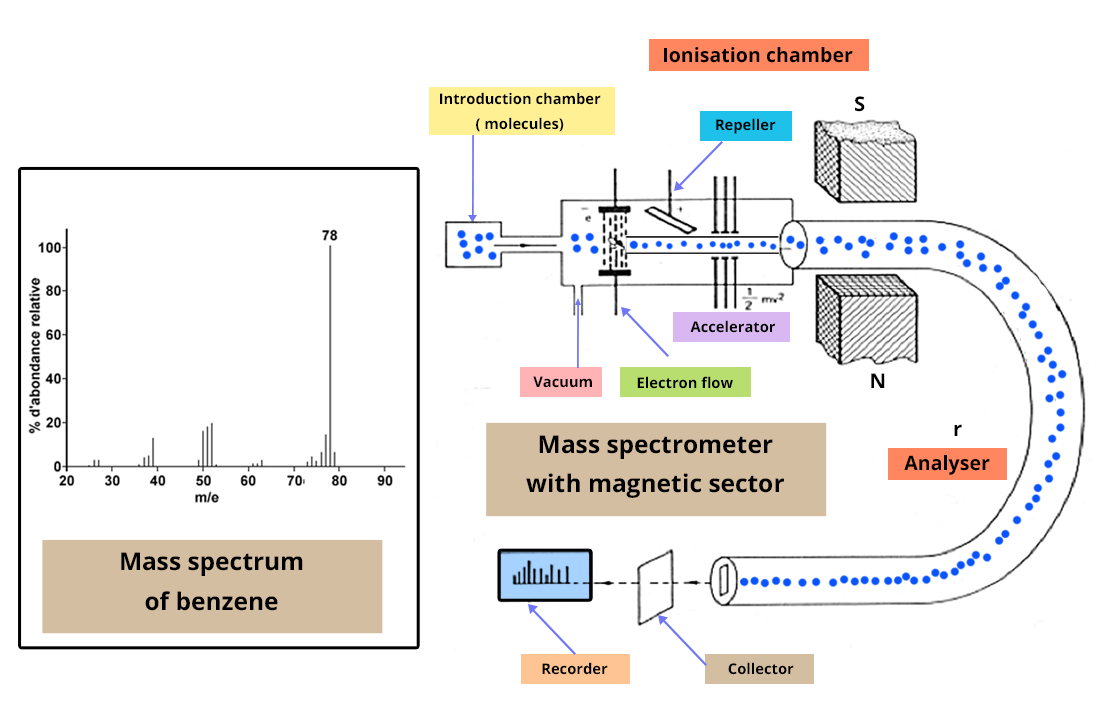Basics of GC
The detector
It generates a signal proportional to the amount of analyte leaving the column and passing through the detector cell.

Flame ionization detector (FID)
Response coefficient depends on the chemical structure of the compound: this must be taken into account when calibrating by internal standard.
Mass Spectrometer
It generates a mass spectrum characteristic of the chemical structure of the compounds. This makes it an informative detector for identifying analytes.





